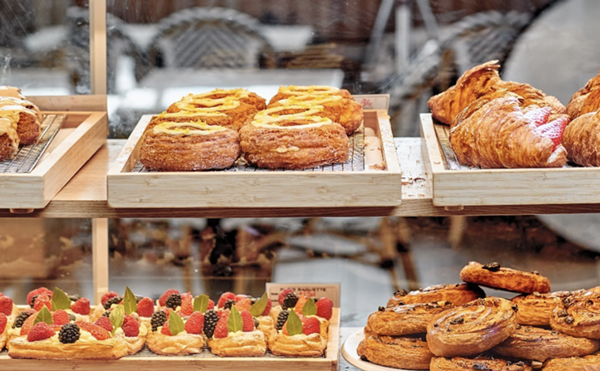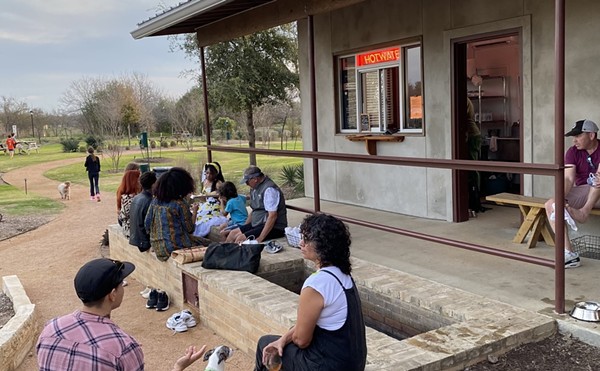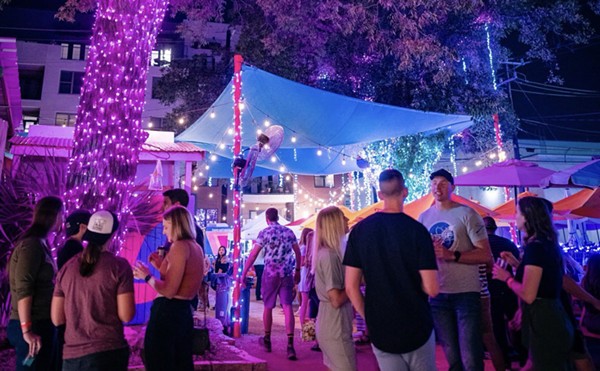 |
In addition to meaning “sauce,” the word “chile” also refers to the capsicum fruit of which the sauce is composed. Choosing the color of your sauce is part of the New Mexican way of life. For some it comes down to a simple preference. For others it’s a rivalry of near Hatfield and McCoy proportions.
In one corner is the thick-skinned New Mexico green chile, grown primarily in and around the town of Hatch in southern New Mexico’s Rio Grande valley. Also known as the Hatch chile, it’s considered a green chile because it’s commonly harvested before it turns red, as all peppers eventually will if left to their own devices. The green’s fleshy build makes it good for roasting and canning. The sauce has natural body and a heart of green fire.
In the other corner is a chile that’s often associated with northern New Mexico, but is actually grown statewide. Thinner skinned, it’s usually allowed to ripen all the way red, and dried. Around the region there are hundreds of varieties of such red chiles, called landraces, each one adapted to its particular microclimate. Red sauce has a delicate complexity and a soul of dirt and blood.
Don Juan de Onate, the Spanish conquistador, was a regular Johnny Chile-seed in the 1500s, helping spread red chile throughout the Rio Grande valley. The green chile, meanwhile, is the product of breeding efforts in the early 1900s by agriculture professor Fabian Garcia. Farmers in Hatch, about 40 miles north of Las Cruces, went big on Garcia’s chile — as did some California farmers, who now call it the Anaheim. Today, Hatch chile comprises the bulk of New Mexico’s nation-leading chile harvest — which is more than double the haul of second-place California.
But who has time to worry about California when there’s a more interesting rivalry at home?
To Don Bustos, a farmer in the northern town of Santa Cruz, growing chile is a spiritual act that connects him with his land and with his ancestors. He grows a landrace red that’s been a part of his family for over 100 years.
“Our chile is flavored by the soil, the cool nights, the sun and the rain,” he says, “not like those weeds they grow in Hatch.”
Danise Coon is a senior research assistant at the non-partisan Chile Pepper Institute, based at New Mexico State University in Las Cruces. Though she comes from northern New Mexico — which means Coon probably prefers red chile — she brushes aside attempts to drag her into the red vs green rivalry. “We’re all in this together,” she says.
But when asked which sauce she would have on her enchilada, if given the choice, she doesn’t hesitate to say “red.”
The Chile Pepper Institute is devoted to education, research, and the storage and dissemination of chile-related information. This information comes in many packages, including digital, hard copy, and DNA in the form of seeds — of both cultivated and wild species — which are available to the public.
The institute was founded by agriculture and genetics professor Paul Bosland, in part because he needed help fielding a steady stream of chile-related inquires from around the world. Nowadays, the institute is just as often at the receiving end of important news, like a recent tip provided by the military of India.
For undisclosed reasons, India’s military had been investigating the Bhut Jolokia chile, which grows in northeast India’s Assam province. The peppers, whose name means “Ghost Chile,” might be the world’s hottest, said the tipster. Bosland acquired seeds, grew them into peppers, and tested their heat in the lab. He determined that Bhut Jolokia chiles exceed a million Scoville units — nearly twice the punch of the previous champ, the habanero.
To folks who’ve cultivated Bhut Jolokia for generations, the heat isn’t news. They’re so used to it, in fact, that a local named Annandita Dutta Tamuly recently ate 60 Bhut Jolkia — that’s 6,000 jalapenos worth of heat — in two minutes.
Chile produces an endorphin rush similar to runner’s high or heroin’s kick. It can speed up metabolism and burn calories. And it can send you crying to mama, even if you avoid heavyweights like the Ghost Chile.
I myself got KO-ed at the salsa bar of Andele, a Mesilla Valley restaurant just south of Las Cruces. With six different salsas to choose from, I can’t be sure which did it, but I think it was the coarsely chopped salsa with a base of lowly jalapeños.
Luckily, another salsa-bar offering, a pile of onions grilled slowly and basted in butter, lime, and soy sauce(!), saved me. This preparation brought out a rich sweetness in the yellow onions, enough to sooth the pain of my capsicum over-medication. Soon I was back in action.
Because that salsa bar was flush with red and green salsas, I didn’t even have to take a side in the New Mexico chile debate. That’s fine, because I wouldn’t want to be without either red or green. If variety is the spice of life, then I’ll choose variety of spice.
Think you can handle Bhut Jolokia?
The Chile Pepper Institute can hook you up:
Chilepepperinstitute.org for more info
[email protected] for a catalog
Let us know how it burns: [email protected]

















